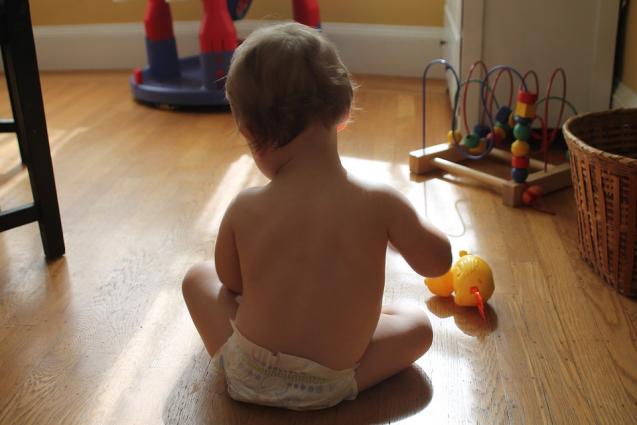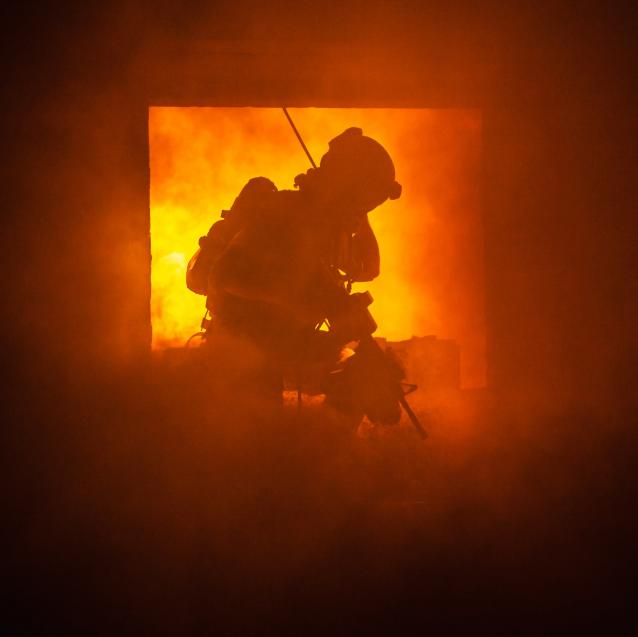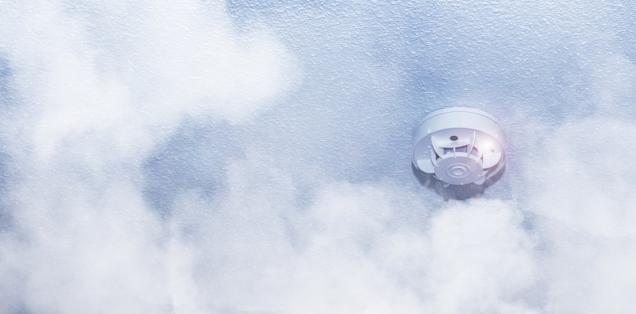
Smoke Alarms Installation & Maintenance According to The Various States in Australia
By Home Safety Store|May 07, 2020
Following legislation when fitting and maintaining your smoke alarm is vital in ensuring you’re making the right choices for your property. Depending on which state you reside in, the regulations and advice around the requirements of your smoke alarm device differ slightly.
Here is our guide to smoke alarm installation and maintenance, according to the various states of Australia.
How Often Should I Replace Smoke Alarms?
All smoke alarms require replacement every 10 years. Most smoke alarms have a use-by date printed on them and once this date has been reached, the entire smoke alarm must be replaced. Newer smoke alarms with a long-lasting lithium battery, have a 10-year lifespan.
In the Northern Territory and Queensland, photoelectric smoke alarms are now a legislative requirement. All residential premises, moveable dwellings, caravans and temporary accommodation, including safari-style tents, require a working photoelectric smoke alarm to be installed.
How Often Should I Replace Batteries?
If your smoke alarm runs on batteries, it will be best to set an annual battery replacement date on a special occasion. The end of Daylight Savings is an ideal time, for example. DFES highlight where other states do not, that your 9 Volt battery should be replaced every year on 1 April. All smoke alarms - including mains powered alarms - have batteries. If your alarm has a 9 Volt user-replaceable battery, you will need to replace the battery each year.
A well-known date like the beginning of summer is always a good way to remember. Refer to the manufacturer’s guide and follow the instructions when replacing your smoke alarm’s batteries.
How Many Smoke Alarms?
The layout of your house will determine how many smoke alarms you need, but as a minimum, install one on each level of your home. According to the Department of Fire & Emergency Services (DFES) of Western Australia, a licensed electrician is required to disconnect or install any mains powered smoke alarm.
This is a requirement throughout Australia, with a smoke alarm to be installed in every bedroom, and one outside of every sleeping space. The Queensland Fire and Emergency Services (QFES) states that if a storey doesn’t have any bedrooms, then the smoke alarm must be installed, in the most likely path of travel to exit the dwelling.
The New South Wales Fire & Rescue Department on the other hand, state that there are minimum requirements needed to meet the Building Legislation Amendment (Smoke Alarms) Act 2005; however, Fire and Rescue NSW recommends a higher level of protection with the installation of interconnected alarms in every bedroom, living space (including hallways and stairways) and even the garage in your home.
Under the Act, different types of premises require smoke alarms to be installed in various locations. Residential dwelling, for example, require a smoke alarm to be installed on each level of the home. The alarm should be installed between the kitchen and sleeping areas, close enough to be heard from the bedrooms. Be sure to install your smoke alarms as soon as possible.
It’s important to place each alarm on a flat stretch of wall or ceiling, roughly in the centre of the room. Wall-placed devices must be about 12 inches or less from the ceiling. It’s vital to also remember that basements and attics also count as separate levels.
How Often Should Smoke Alarms be Tested And Cleaned?
According to DFES recommendations for smoke alarm maintenance, only working smoke alarms can save lives. Therefore, it’s imperative to test your detectors immediately after they have been installed. Press the test button so that everyone is familiar with the sound of the alarm.
Although some smart detectors are self-testing, DFES also recommend that you test your smoke alarm at least once every month. This can be done by holding down the test button until you hear a loud alert tone.
It’s recommended that you vacuum around your smoke alarm vents with a soft brush attachment, at least once every year. This will remove a build-up of dust and cobwebs, while the use of surface insect spray around the smoke alarm, can prevent insects from nesting inside.
Dust and pollutants can impede fire alarm performance. While an occasional light dusting with a dry rag can easily remove any exterior dust, it’s best to perform deeper cleans annually. Be sure to take the device off of the ceiling or wall and remove the power source, before gently removing the external casing. Carefully clear out any collected dust using a vacuum attachment, a compressed air can, or a dry cloth — avoiding liquid sprays or cleaners. Once all dust is gone, you can reassemble the detector and place it back on the wall or ceiling.
Fire and Rescue NSW recommends the following maintenance:
• Every month: Smoke alarms should be tested (by pressing the test button) to ensure the battery and the alarm work.
• Every six months: Smoke alarms should be cleaned with a vacuum cleaner. This will remove any dust or particles that could prevent the smoke alarm from working properly.
• Once a year: If your smoke alarm has a battery, you should replace it annually. A good way to remember is to change it when you change your clocks at the end of Daylight Saving. If your smoke alarm uses a lithium battery, it is inbuilt into the alarm and cannot be replaced. The entire unit needs to be replaced every 10 years.
• Every 10 years: Replace your smoke alarm. Smoke alarms do not last forever and the sensitivity in all smoke alarms will reduce over time. All types of smoke alarms should be removed, replaced and disposed of at least every 10 years.
Contact your home security experts and discuss your requirements to keep your home and family safe. For an extensive range of mains powered and battery operated Lifesaver Smoke Alarm solutions, the team at Home Safety Store can assist. Contact us to find out more about our PSA Lifesaver Smoke Alarm range.
Here is our guide to smoke alarm installation and maintenance, according to the various states of Australia.
How Often Should I Replace Smoke Alarms?
All smoke alarms require replacement every 10 years. Most smoke alarms have a use-by date printed on them and once this date has been reached, the entire smoke alarm must be replaced. Newer smoke alarms with a long-lasting lithium battery, have a 10-year lifespan.
In the Northern Territory and Queensland, photoelectric smoke alarms are now a legislative requirement. All residential premises, moveable dwellings, caravans and temporary accommodation, including safari-style tents, require a working photoelectric smoke alarm to be installed.
How Often Should I Replace Batteries?
If your smoke alarm runs on batteries, it will be best to set an annual battery replacement date on a special occasion. The end of Daylight Savings is an ideal time, for example. DFES highlight where other states do not, that your 9 Volt battery should be replaced every year on 1 April. All smoke alarms - including mains powered alarms - have batteries. If your alarm has a 9 Volt user-replaceable battery, you will need to replace the battery each year.
A well-known date like the beginning of summer is always a good way to remember. Refer to the manufacturer’s guide and follow the instructions when replacing your smoke alarm’s batteries.
How Many Smoke Alarms?
The layout of your house will determine how many smoke alarms you need, but as a minimum, install one on each level of your home. According to the Department of Fire & Emergency Services (DFES) of Western Australia, a licensed electrician is required to disconnect or install any mains powered smoke alarm.
This is a requirement throughout Australia, with a smoke alarm to be installed in every bedroom, and one outside of every sleeping space. The Queensland Fire and Emergency Services (QFES) states that if a storey doesn’t have any bedrooms, then the smoke alarm must be installed, in the most likely path of travel to exit the dwelling.
The New South Wales Fire & Rescue Department on the other hand, state that there are minimum requirements needed to meet the Building Legislation Amendment (Smoke Alarms) Act 2005; however, Fire and Rescue NSW recommends a higher level of protection with the installation of interconnected alarms in every bedroom, living space (including hallways and stairways) and even the garage in your home.
Under the Act, different types of premises require smoke alarms to be installed in various locations. Residential dwelling, for example, require a smoke alarm to be installed on each level of the home. The alarm should be installed between the kitchen and sleeping areas, close enough to be heard from the bedrooms. Be sure to install your smoke alarms as soon as possible.
It’s important to place each alarm on a flat stretch of wall or ceiling, roughly in the centre of the room. Wall-placed devices must be about 12 inches or less from the ceiling. It’s vital to also remember that basements and attics also count as separate levels.
How Often Should Smoke Alarms be Tested And Cleaned?
According to DFES recommendations for smoke alarm maintenance, only working smoke alarms can save lives. Therefore, it’s imperative to test your detectors immediately after they have been installed. Press the test button so that everyone is familiar with the sound of the alarm.
Although some smart detectors are self-testing, DFES also recommend that you test your smoke alarm at least once every month. This can be done by holding down the test button until you hear a loud alert tone.
It’s recommended that you vacuum around your smoke alarm vents with a soft brush attachment, at least once every year. This will remove a build-up of dust and cobwebs, while the use of surface insect spray around the smoke alarm, can prevent insects from nesting inside.
Dust and pollutants can impede fire alarm performance. While an occasional light dusting with a dry rag can easily remove any exterior dust, it’s best to perform deeper cleans annually. Be sure to take the device off of the ceiling or wall and remove the power source, before gently removing the external casing. Carefully clear out any collected dust using a vacuum attachment, a compressed air can, or a dry cloth — avoiding liquid sprays or cleaners. Once all dust is gone, you can reassemble the detector and place it back on the wall or ceiling.
Fire and Rescue NSW recommends the following maintenance:
• Every month: Smoke alarms should be tested (by pressing the test button) to ensure the battery and the alarm work.
• Every six months: Smoke alarms should be cleaned with a vacuum cleaner. This will remove any dust or particles that could prevent the smoke alarm from working properly.
• Once a year: If your smoke alarm has a battery, you should replace it annually. A good way to remember is to change it when you change your clocks at the end of Daylight Saving. If your smoke alarm uses a lithium battery, it is inbuilt into the alarm and cannot be replaced. The entire unit needs to be replaced every 10 years.
• Every 10 years: Replace your smoke alarm. Smoke alarms do not last forever and the sensitivity in all smoke alarms will reduce over time. All types of smoke alarms should be removed, replaced and disposed of at least every 10 years.
Contact your home security experts and discuss your requirements to keep your home and family safe. For an extensive range of mains powered and battery operated Lifesaver Smoke Alarm solutions, the team at Home Safety Store can assist. Contact us to find out more about our PSA Lifesaver Smoke Alarm range.



